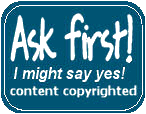The domain name is found after the http:// and www. to the first forward slash /. For example in the URL www.novemberlearning.com, novemberlearning.com is the domain name.
· A domain name can provide quality of information of a site or
2. What is the extension in the domain name?
Extensions are to show the type of establishment
COMMON EXTENSIONS
.edu Educational organization (most US universities)
.k12 US school site (not all US schools use this)
.ac Academic institution (outside of US)
.sch School site (some schools outside of the US use this)
.com Company (usually .co in the UK)
.org Any organization
.gov Government agency
.net Network
.mil Military institution
New extensions to look for are .biz, .name, .pro, .info. All are used for commercial purposes.
· Extensions can include country codes
· Some extensions provide reliable information than others.
· Reliable are .edu, .gov, .k12. watch out for are .com, .org, .net.
3. Are you on a personal page?
· You may not recognize the domain name.
· If you are on personal page information may not be trustworthy.
· personal pages created by an individual, sometimes the pages offer highly biased opinions.
· URL such as jdoe and a tilde ~ or % or the word users or people or members frequently means you are on a personal web site.
· if a site has the extension, .edu, you need to look out for personal pages.
& now Website Validity...
How to know if a website is valid or not.
1. Check to see if the website has been updated or not. Information can be changed over the years so it’s best to see if the information given to you is recent. Don’t just check in one web page for the information there are other information on the internet.
2. Check who the author is and research on that person. It can easily be written by someone who wrote it by being bias.
3. Make sure it’s not a bias page. This can lead you to think that the information is correct.
4. The design of the page. Some design of the page allows you to think that it is valid. Colours and layout is very important because sometimes, you would not know if the writer itself is someone younger than the person searching the information.
5. The content. The information may be accurate but it might be written from there head and not from experience or research. So be careful of what they have written down.
6. Search on other search engines about it and check to see if they have other sources of websites.
7. Cut the URL shorter to direct you to the homepage of the site.
- e.g
http://www.fcps.edu/LutherJacksonMS/library/techtips/tips/website_validity_guideline.html
http://www.fcps.edu/LutherJacksonMS/library/
http://www.fcps.edu/LutherJacksonMS/
http://www.fcps.edu/
8. Websites with .com, .org, .net, and .gov can possibly sites that are not valid information. .edu is valid because it’s either written by a school or a university. Some websites can be a blog which is written by a person or a group of people giving out information.
9. If you roam around the pages of the website you can tell if it’s valid or not because sometimes they give out links that can lead you to another website which does not involve with what you’re doing.
————————
Some sources that can help you verify if the website is valid or not.
“Evaluating+Website+Validity+Assignment.pdf (application/pdf Object).”
“HippoCampus Blog: How To Check The Validity Of A Website.”
“How to Choose Valid Websites | eHow.com.”
“Internet Website Validity.”
“The W3C Markup Validation Service.”
“HippoCampus Blog: How To Check The Validity Of A Website.”
“How to Choose Valid Websites | eHow.com.”
“Internet Website Validity.”
“The W3C Markup Validation Service.”













No comments:
Post a Comment